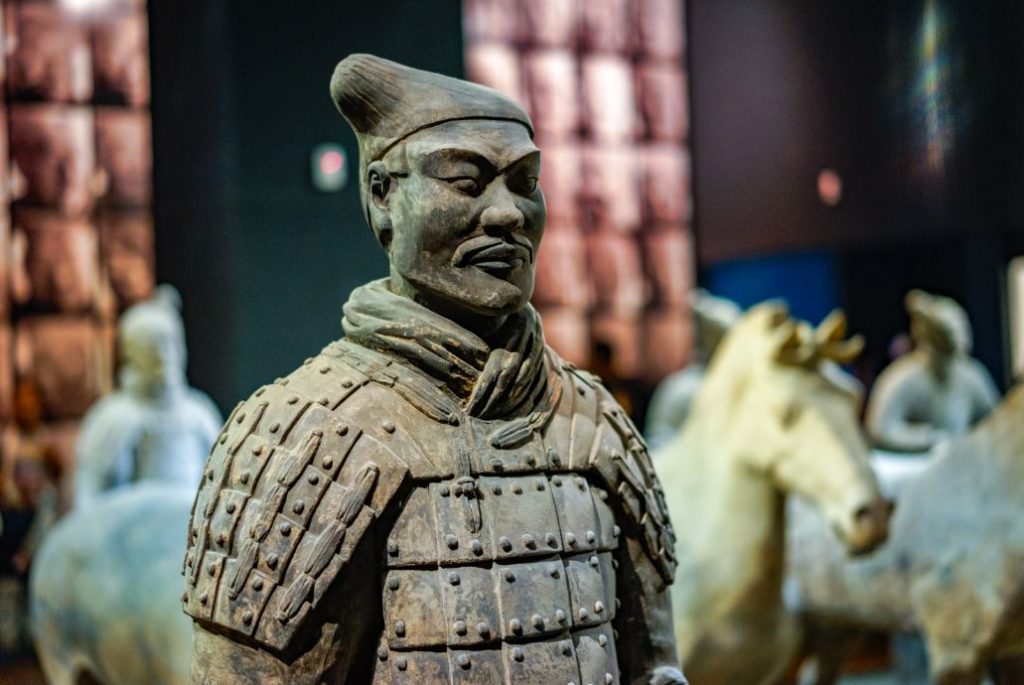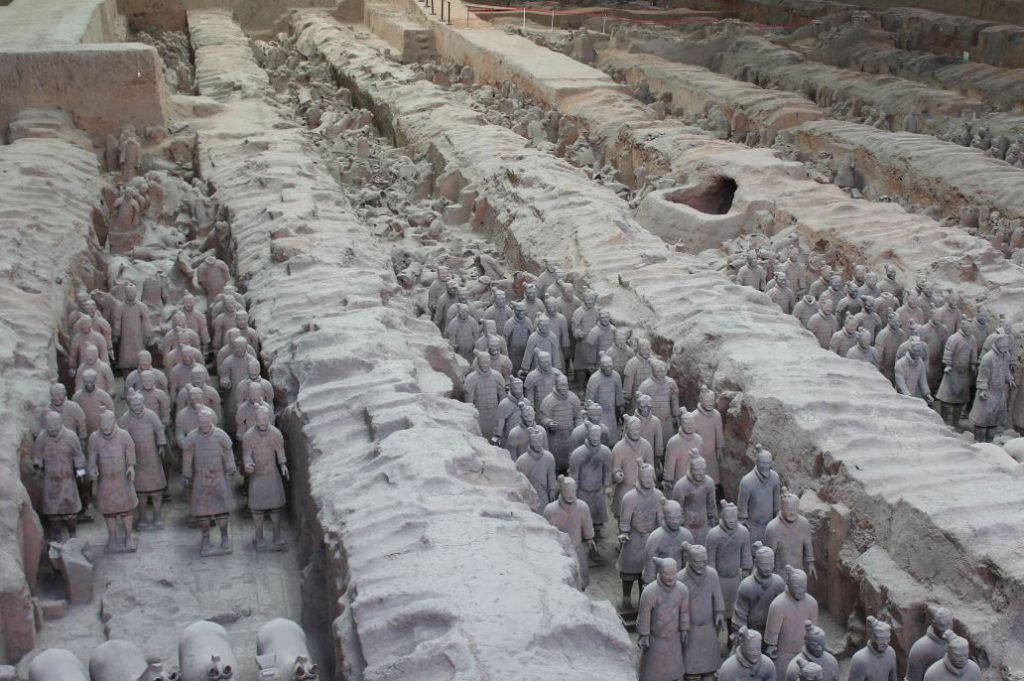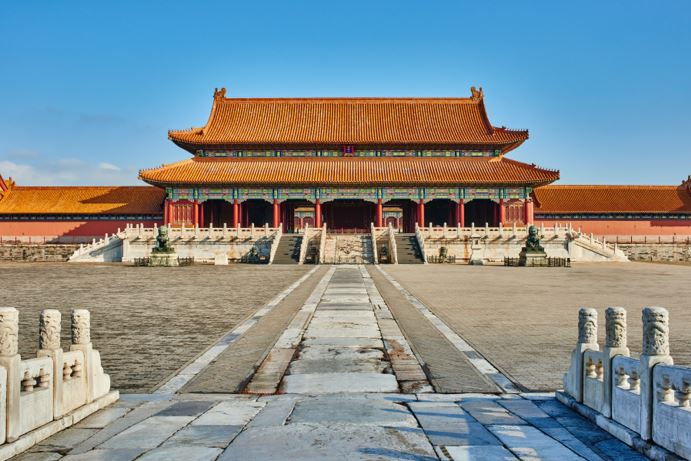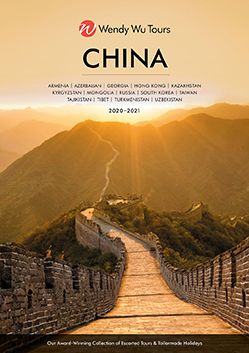Chinese New Year is fast approaching, and whilst it might be the most celebrated festival of the year, China has a lot more to celebrate in 2020!
Two of the most popular things to see on a China Holiday, aside from the Great Wall of course, are the Terracotta Army and the Forbidden City, both of which are celebrating iconic milestones this year.
220 new terracotta warriors have been discovered in the mausoleum of Qin Shi Huang, the First Emperor of China. This discovery has revealed a variety of new additions to the current army, including a new rank of soldier, new weapons and even a golden camel – which is believed to be the oldest of its kind! Twelve horses were also found, bringing the total number of terracotta army figures found to over 8,000.

How do I visit the Terracotta Army?
Not all of the recovered statues are able to be seen, however the best place to see a majority of the figures is at the Museum of Qin, which is a 16,300 square-meter excavation site, revealing over 7,000 of the figures. Here you will see warriors, horses, chariots and even figures arranged in battle formations!
To help preserve the figures, you are not able to touch them but can walk around the site, overlooking the excavation pits and get a birds-eye view of the dig. Along with special figures – such as Chariots, displayed in glass vaults along the museum. There is even a shop, where you can purchase replicas of the warriors made from the same yellow earth!
You can visit the Museum of Qin, in Xi’an as part of many of our China Tours.
Why do people visit the Terracotta Army?
As one of China’s oldest treasures with over 1 million visitors a year, it’s a must-do on any China visit, but what makes them iconic? The warriors date back to 221BC, when the results of the Second Punic war left Asia divided and at war, finally establishing the prosperous dynasty, The Qin. Resulting in China becoming the most powerful state in the world with a population of 20 million and an annual revenue of 2,000kg of silver. In gratitude for their great leader (the first Qin Emperor), the republic pulled together to create an army of warriors to protect him in the afterlife. The figures were carved all around his mausoleum, until the project was stopped in 208BC and buried underground.
On 29th March 1974 a group of farmers digging a water well approximately 1.5km east of the Emperors mausoleum discovered the warriors. From there a huge excavation project went underway to become the marvel we know today. The warriors soon became a UNESCO world heritage site and became listed as the eighth wonder of the world.

What else can I see in China?
Our top pick for something to see in China is the Forbidden City and Tienanmen Square in Beijing. This year China celebrates the 600th anniversary of the Forbidden City, which means that a visit here will be better than ever as grand exhibitions will pop up throughout the year celebrating topics such as Royal-Family-Life and court culture, Chinese customs and festivals and archaeological discoveries. The exhibitions will also break down the boundaries from past to present, and break down the boundaries of art, science and history with the use of modern digital technology. There will be interactive exhibitions, digital displays and lights dotted around the Forbidden City and Tienanmen square.
What is the Forbidden City?
The forbidden City is a complex full of imperial riches, full of palaces and the famous Palace Museum, just off of Tienanmen Square in Beijing. Constructed in the 15th & 16th century from stones mined and transported from a quarry, approximately 43 miles away, to ensure only the finest stone was used. In-fact, one of the biggest pieces (weighing 135 tonnes) was slid over the ice in 1557, on a sled, pulled by a team of men which took 28 days!
Why is the Forbidden City forbidden?
Up until the year 1420 the Forbidden City was forbidden to commoners, meaning they could not enter without permission. Imperial families and invited high officials could enter. The city got its name from the English Translation of the Palace’s Imperial name Zijin Cheng.
How do I visit the Forbidden City?
You can enter the Forbidden City via Tienanmen Square which is visited on several of our China Tours. The cost of entrance and the guide is included in the cost of your tour and we allow you ample time to walk around and explore the city. As an added highlight, as part of one of our tours you’ll enter the Forbidden City via the Gate of Supreme Harmony.

Whilst many of our tours include a visit to Beijing and the Forbidden City, and Xi’an and the Terracotta Warriors, you can create your own tour of China or personalised itinerary with our tailor-made team.
Chinese New Year
Chinese New Year, or often referred to as Spring Festival or (Chunjie) is celebrated on Saturday 25th January and is an annual lunar celebration all over China. It marks the end of the coldest days and marks a new year lunar cycle, welcoming Spring. The Chinese calendar is divided into Lunar cycles of 60 years, and each cycle is then divided into 12 years. Each year is represented by an animal or Chinese Zodiac symbol.
How is Chinese New Year Celebrated?
Chinese New Year is the longest public holiday in China, which can last anything from 7-12 days and most schools and colleges close for around 4 weeks as part of a Winter break. Chinese people from all over the world fly home to be with their families and celebrate with feasts, parties and by attending parades.
Before the celebrations it is customary for people to completely clean their homes (much like our tradition of a ‘Spring Clean’ in the UK), which is done to rid any bad fortune from the previous year and to welcome good fortune of the new year arising. Homes are decorated with lanterns, vertical banners containing poetry (known as Couplets) and paper cuttings in pretty shapes – such as snowflakes. These decorations are traditionally red because it is believed that the colour brings happiness, prosperity and good wealth. The colour red can also ward off bad spirits and bad luck, so the more red decorations you hang – the better!
It is believed that ¼ of the countries in the world celebrate the Chinese New Year in one way or another, so look out for a celebration near you! This year, China celebrates the year of the Rat.
We hope to welcome you to China as part of the celebrations in 2020!






















